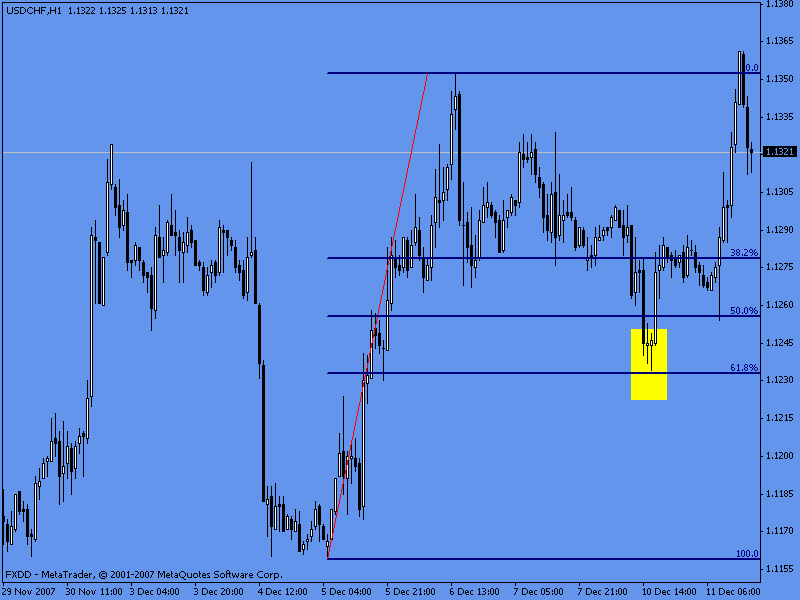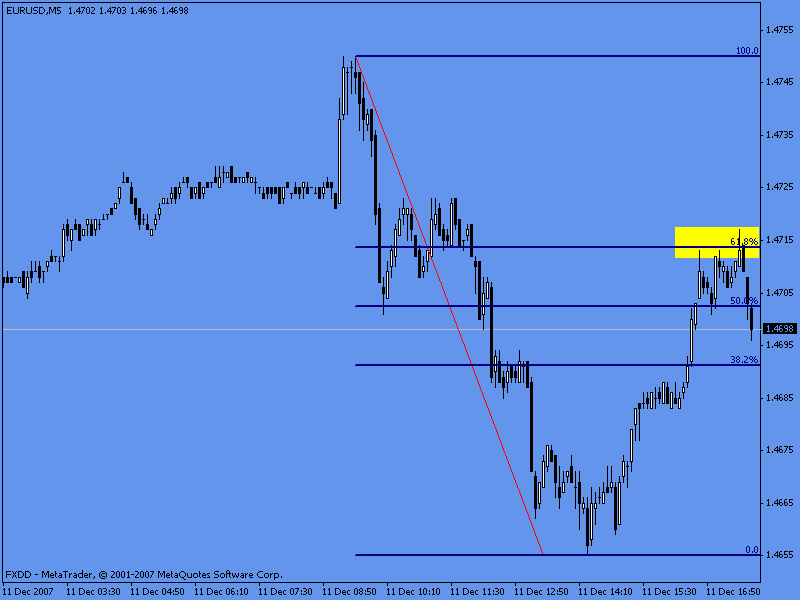Fibonacci Retracements
Developed by Leonardo Fibonacci in the 12th century and then popularized by Ralph Elliot. The main purpose of this technique is to forecast possible reaction levels (support or resistance) as the price pulls back down or up.
The Fibonacci numbers are: 1, 1, 2, 3, 5, 8, 13, 21, 34, 55, 89, 144, 233, 377, 611…
The interesting thing about these numbers is that the sum of each consecutive number results in the next Fibonacci number (i.e. 13+21=34, 2+3=5). In addition, the ratio of any number and the next higher number (after the first five numbers of the series) approximates to 0.618.
The inverse number of 0.618 is 1.618, which is commonly referred as the golden mean. The golden mean is related to almost every natural phenomena (in the family tree of cows, rabbits and bees, the number of branches in a tree, petals on flowers). The series is even present in the proportions of the Egyptian pyramids.
It is not relevant studying why these Fibonacci numbers are present in nature, what is important to answer is how could this information help me? Take for instance, you buy a pair of rabbits, wouldn’t it be good to know that at the end of the sixth month you will need to clear some space for 13 pairs of rabbits?
Fibonacci Retracement Usage
Back to trading, the most common usage of the Fibonacci numbers is to forecast reaction levels after a major advance or decline in price. The most important levels are 61.8%, 50% and 38% of the initial decline or advance. These levels are used based in a major move of 100% trough to peak or peak to trough.
In a major advance if a pullback is to happen, it is likely that it will find support first at the 38% retracement level, then the 50% level and lastly at the 61.8% level. When the market bounces off from these levels, the market is more likely to continue its uptrend. If it breaks these levels, on the other hand, a probable reversal might be in place. The opposite is true for a decline.
Fibonacci levels as support

[Chart 28]
We measure the total movement (from 1 to 100%) where we want to calculate possible retracements. In the chart above the market retraced all the way to the last retracement level 62.8%. It played an important support role preventing the market from falling below such level.
Fibonacci levels as resistance

[Chart 29]
The market reacts at the 61.8 retracement. Traders will look for short opportunities around that retracement level. If on the other hand the market gets past the 61.8% retracement, the market is likely to reverse.
As with other technical factors, this indicator gives better results when used in combination with other technical tools.
Remember, some indicators work better under trending market conditions and some other during sideways conditions. For this reason, we need to choose different indicators for different market conditions. For instance, we could us an oscillator to forecast tops and bottoms during a sideways market, but once the range is broken and a trend is present, we could use the CCI and take the signals when the readings reach extreme levels in direction of the trend.
It is important to understand the market changes, and it is impossible to use one indicator for every market condition.
Relying on one sole indicator is risky. We should adopt different indicators for different market conditions, preferably different concepts.
For instance using oscillators in combination with candlestick patterns to get the trading signals. The other extreme, using many indicators, is not good either. You could end up with a complicated system that is really hard to follow.
For now, study each indicator reviewed in this lesson, see which one fits you better or what combination is better for you.